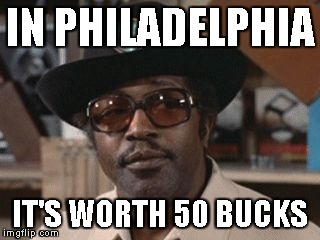steak&chicken
Member
I'm ready for my anthonyj tattoo!$1,880 calls are gonna go ITM and y’all gonna mark this as “funny” just like you did when I said buy $600 calls a few months ago
You can install our site as a web app on your iOS device by utilizing the Add to Home Screen feature in Safari. Please see this thread for more details on this.
Note: This feature may not be available in some browsers.
I'm ready for my anthonyj tattoo!$1,880 calls are gonna go ITM and y’all gonna mark this as “funny” just like you did when I said buy $600 calls a few months ago
Just a reminder that last Mon, Feb 3, 2020 we opened at $673.69 so we're up about $130 or +20% over 1 week...
Now me Winthorp, would you sell your Rouchefoucauld for 50 bux?

Cheers!
Isn't this how it works?-Upward volatility almost sounds like oxymoron. lol
So you saying as price get around 900, due to high amount of Call options that could be executed, which will create downward pressure due closing of the call options?
If it hits 1880 end of February, I'll legally change my name to AnthonyjSoon
to be fair Tesla's making the entire 2010 in less than a day.We are now in a world where 15 second swings equal the IPO price.
Yeah but Bay Area mobile homes are still selling for 5 million right?In the Bay Area, you even see them in mobile home parks.
$1,880 calls are gonna go ITM and y’all gonna mark this as “funny” just like you did when I said buy $600 calls a few months ago
The agony of the TSLA bears:
You know they’re getting close to understanding what’s going on when they start talking about the stock movement being an animal spirit. I’m just disappointed they didn’t specify which animal spirit.
Honey badgerYou know they’re getting close to understanding what’s going on when they start talking about the stock movement being an animal spirit. I’m just disappointed they didn’t specify which animal spirit.
Nice insight; I'll just point out that the MM did pay a hefty price for the options mispricing, just not as much as it would have been without manipulationsThey should have had to pay the price for their mispricing. What this illustrates is those playing the game at the highest levels, the market makers, actually don't know what they are doing. But that they can hack together a corrupt solution to "fix" their gross negligence.
In the US, Model 3 has the highest resale value after 1 year of ownership (only losing 5.5%):
Tesla Model 3 tops list of cars that hold their value | The Driven
If that isn't a strong indicator of demand (and supply constraint) I don't know what is!
So, as a followup reply to @FrankSG, the biggest open interest spike on the call side for this Friday's expiry (02/14) is at $900, and this is the daily breakdown on when they were bought:
As you can see 95%+ of the open interest $900 contracts were bought when the share price was above or near $900 already, with very high implied volatility and very high premiums. I don't expect options market makers to have much trouble delta hedging these, should the share price approach $900 again, while keeping a fair share of the premiums.
The put open interest is basically zero in the $700-$1,000 price range for this week, so I'd expect there to be upwards volatility, should the price approach or decisively break through $900.
maybe it's just me, but it seems used S's are priced more competitively than used 3'sI know a few people who’d love to get into a Tesla, but just can’t swing for a new one. They’ve been looking around for used 3s and there just aren’t any that don’t scream, ‘****! That price isn’t much different than a brand new one?!”
The agony of the TSLA bears:
We are now in a world where 15 second swings equal the IPO price.


